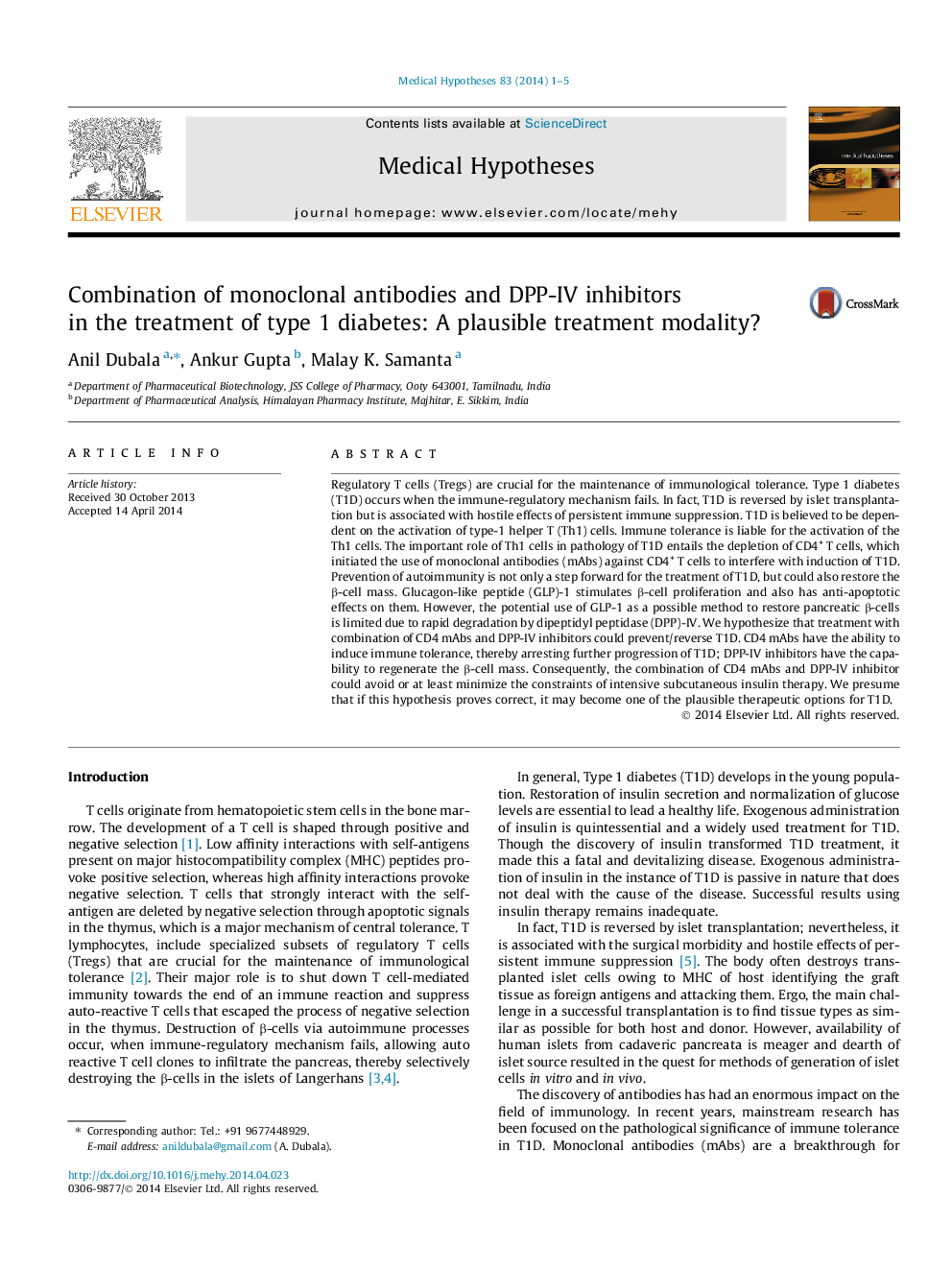| Article ID | Journal | Published Year | Pages | File Type |
|---|---|---|---|---|
| 2489046 | Medical Hypotheses | 2014 | 5 Pages |
Regulatory T cells (Tregs) are crucial for the maintenance of immunological tolerance. Type 1 diabetes (T1D) occurs when the immune-regulatory mechanism fails. In fact, T1D is reversed by islet transplantation but is associated with hostile effects of persistent immune suppression. T1D is believed to be dependent on the activation of type-1 helper T (Th1) cells. Immune tolerance is liable for the activation of the Th1 cells. The important role of Th1 cells in pathology of T1D entails the depletion of CD4+ T cells, which initiated the use of monoclonal antibodies (mAbs) against CD4+ T cells to interfere with induction of T1D. Prevention of autoimmunity is not only a step forward for the treatment of T1D, but could also restore the β-cell mass. Glucagon-like peptide (GLP)-1 stimulates β-cell proliferation and also has anti-apoptotic effects on them. However, the potential use of GLP-1 as a possible method to restore pancreatic β-cells is limited due to rapid degradation by dipeptidyl peptidase (DPP)-IV. We hypothesize that treatment with combination of CD4 mAbs and DPP-IV inhibitors could prevent/reverse T1D. CD4 mAbs have the ability to induce immune tolerance, thereby arresting further progression of T1D; DPP-IV inhibitors have the capability to regenerate the β-cell mass. Consequently, the combination of CD4 mAbs and DPP-IV inhibitor could avoid or at least minimize the constraints of intensive subcutaneous insulin therapy. We presume that if this hypothesis proves correct, it may become one of the plausible therapeutic options for T1D.
